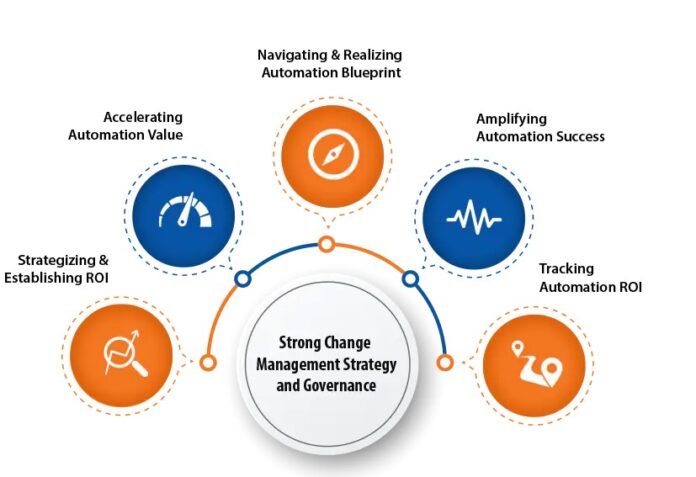Introduction to SMT Technology
Are you curious about the fascinating world of Surface Mount Technology (SMT)? Wondering how this revolutionary process is changing the game in electronics manufacturing? Well, get ready to dive into the exciting realm of SMT assembly and discover everything you need to know!
Gone are the days of bulky electronic components and labor-intensive soldering. With SMT, smaller, sleeker, and more efficient devices are becoming a reality. From smartphones and laptops to medical devices and automotive systems, SMT has become an integral part of modern technology.
In this blog post, we’ll explore the ins and outs of SMT manufacturing – from understanding its intricacies to uncovering its benefits and drawbacks. We’ll also delve into the factors that affect the cost of setting up an SMT line so that you can have a clearer picture when planning your production strategy.
But wait! That’s not all. We’re even going to take you on a virtual tour through ABL Circuits’ tailored SMT service with a captivating case study. And as if that wasn’t enough, we’ll peek into future development trends in SMT assembly for those who like to stay ahead of the curve.
So buckle up your seatbelts because we’re about to embark on an exhilarating journey through the world of Surface Mount Technology. Get ready for some eye-opening insights that will leave you amazed by what can be achieved in today’s ever-evolving electronic landscape!
Understanding the SMT Process
The surface mount technology (SMT) process is a widely used method in electronic assembly, allowing for the efficient and cost-effective production of circuit boards. Unlike through-hole technology, where components are inserted into pre-drilled holes on the board, SMT involves mounting components directly onto the surface of the board.
The SMT process consists of several key steps. First, solder paste is applied to designated areas on the circuit board using a stencil or dispenser. Then, automated pick-and-place machines precisely position tiny electronic components onto their designated spots on the board’s surface. These components can include resistors, capacitors, integrated circuits, and more.
Once all components are placed correctly, the board enters a reflow oven that heats it up to a specific temperature. This causes the solder paste to melt and bond each component securely to its location on the board. After cooling down and inspection for quality control purposes, additional steps like cleaning and testing may be performed before final packaging.
Understanding this intricate process is crucial as it enables manufacturers to maximize efficiency and ensure high-quality end products. With advancements in technology driving smaller component sizes and increased complexity of circuits being produced today, staying abreast of industry trends is essential for successful implementation of SMT manufacturing processes.
As industries continue to demand smaller devices with enhanced functionality at lower costs, mastering SMT assembly becomes increasingly important for electronics manufacturers worldwide. Thus understanding each step of this highly precise process empowers businesses to make informed decisions when investing in equipment or outsourcing services related to surface mount technology.
Benefits and Drawbacks of SMT Manufacturing
SMT manufacturing, also known as surface mount technology, has revolutionized the electronics industry with its numerous benefits. One of the key advantages is its ability to produce smaller and lighter electronic components. Unlike through-hole assembly, which requires drilling holes in circuit boards for component insertion, SMT allows for direct placement of components on the board’s surface.
Another benefit is improved reliability. With SMT assembly, components are soldered directly onto the PCB using reflow ovens or wave soldering machines. This eliminates the need for manual soldering and reduces the risk of human error. The precise placement of components also leads to better electrical connections and fewer chances of loose connections or shorts.
Furthermore, SMT offers cost savings in terms of materials and labor. Since there are no drilled holes required, manufacturers can use smaller PCBs that require less material. Additionally, automated pick-and-place machines can quickly place multiple components simultaneously, reducing labor costs compared to manual assembly methods.
However, there are some drawbacks to consider when it comes to SMT manufacturing. One challenge is that certain electronic components may not be compatible with the surface mount process due to their size or shape. These components may still need through-hole assembly techniques or specialized mounting solutions.
Additionally, while SMT provides faster production times overall due to automation capabilities, initial setup can be time-consuming as stencils must be created for accurate paste application during soldering.
In conclusion (as per instructions above), understanding the benefits and drawbacks of SMT manufacturing is crucial when considering whether it’s suitable for your specific project requirements. While it offers advantages such as miniaturization potential and improved reliability at a lower cost overall; compatibility issues with certain components and potential setup time should also be taken into account before making a decision.
The Cost of SMT Assembly
The cost of SMT assembly can vary significantly depending on various factors. One of the primary factors that affect the cost is the complexity of the PCB design. More complex designs with a high number of components will require more time and resources for assembly, resulting in higher costs.
Additionally, the volume of production plays a significant role in determining the overall cost. Higher volumes allow for economies of scale, reducing per-unit costs. On the other hand, low-volume productions may have higher setup costs and additional expenses associated with materials procurement.
The choice between manual and automated assembly also impacts cost considerations. Manual assembly tends to be more labor-intensive and time-consuming, increasing costs compared to automated processes which offer greater efficiency and precision.
Furthermore, sourcing quality components can influence expenses as well. Opting for lower-cost components might save money upfront but could result in long-term reliability issues or increased rework during assembly.
It’s essential to factor in any additional services required such as testing, inspection, or conformal coating application. These supplementary processes contribute to overall costs but are crucial for ensuring product quality and reliability.
Considering all these variables is crucial when estimating the cost of SMT assembly projects accurately. By partnering with an experienced contract manufacturer like ABL Circuits who offers tailored SMT services catered to your specific requirements while providing transparent pricing structures can help you get a better understanding of what your project entails economically without sacrificing quality or efficiency.
Factors Affecting the Cost of SMT Lines
When considering the cost of implementing a surface mount technology (SMT) line, several factors come into play. These factors can greatly influence the overall investment required for SMT assembly and should be carefully considered before making any decisions.
One significant factor that affects the cost is the size and complexity of the production volume. Larger volumes often require more advanced equipment and a higher level of automation, resulting in increased costs. Conversely, smaller volumes may allow for manual assembly processes, reducing expenses.
The type and quality of components used also impact costs. Some specialized components may be more expensive or have longer lead times, affecting project timelines and budget requirements. Additionally, sourcing high-quality components might command a premium price but can result in improved product reliability.
The level of customization needed is another crucial factor to consider. Customized SMT solutions often require additional setup time, programming modifications, and specialized tooling or fixtures—increasing costs compared to standard production runs.
Furthermore, labor costs should not be overlooked when estimating expenses related to SMT lines. Skilled technicians are essential for efficient operation and maintenance but may contribute significantly to operational expenditures over time.
Additionally, facility-related expenses such as rent or mortgage payments need consideration since they directly affect overall operating costs. The infrastructure required for an optimized working environment with proper temperature control and ESD protection must also be factored into calculations.
Technological advancements can both positively influence efficiency while potentially raising initial investment requirements due to newer equipment prices being higher than older models—making it essential to analyze current needs versus long-term benefits when selecting machinery.
By taking these various factors into account during planning stages—the size and complexity of production volume; component type & quality; level of customization; labor costs; facility-related expenses; technological advancements—it becomes possible to make informed decisions about how best to allocate resources within an organization’s given constraints.
Case Study: ABL Circuits’ Tailored SMT Service
ABL Circuits is a leading provider of tailored Surface Mount Technology (SMT) services, catering to the unique needs of clients across various industries. With their expertise in SMT assembly, they have successfully executed numerous projects, delivering high-quality products and excellent customer satisfaction.
One key aspect that sets ABL Circuits apart is their ability to customize their SMT service according to specific requirements. Whether it’s prototype development or large-scale production runs, they ensure that each project receives personalized attention and precise execution.
Their team of highly skilled technicians possesses an in-depth understanding of the latest advancements in surface mount technology. They are well-equipped with state-of-the-art machinery and tools necessary for efficient PCB assembly, ensuring accuracy and reliability throughout the entire process.
Moreover, ABL Circuits prioritizes quality assurance at every step. Their rigorous testing procedures guarantee optimal performance and adherence to industry standards. From component sourcing to final inspection, every detail is meticulously checked to deliver flawless end products.
Another significant advantage offered by ABL Circuits’ tailored SMT service is their commitment to cost-effectiveness without compromising on quality. By optimizing production processes and utilizing strategic sourcing methods, they can provide competitive pricing options for clients while maintaining superior product integrity.
In addition to offering customized solutions for traditional SMT applications, ABL Circuits also stays ahead of industry trends by embracing emerging technologies such as IoT devices and wearable electronics. This forward-thinking approach ensures that clients receive cutting-edge solutions that meet current market demands.
ABL Circuit’s reputation for excellence extends beyond its tailored SMT service as well. Their dedication towards exceptional customer support further solidifies their position as a trusted partner in the electronics manufacturing industry.
ABL Circuit’s tailored SMT service offers unmatched customization options coupled with advanced technological capabilities. With a focus on quality assurance and cost-effectiveness, they continue to set new benchmarks in the SMT assembly field. Whether it’s a small-scale project or a complex production








